Machu Picchu Tickets: Check Availability Now
Heads up: availability updates in real time and may change without notice. Seeing open slots doesn’t secure a booking until your reservation is confirmed.
Machu Picchu is located high up in the Peruvian Andes and stands as a testimony to the creativity and ingenuity of the Incas. The ancient citadel is often shrouded by mist and attracts millions of visitors every year. We invite you to learn more about this fantastic site, from its actual name to the true discoverers who were there before Professor Hiram Bingham's 1911 expedition. Are you ready to discover everything about Machu Picchu?
What is Machu Picchu
The name Machu Picchu comes from two Quechua words: "Machu," meaning "old," and "Picchu," meaning "mountain”. Together, they translate to “Old Mountain or Great Mountain”. It’s one of Peru’s most important attractions in Peru and a symbol of its culture and history.
Built in the 15th century under the rule of Pachacuti Inca Yupanqui, Machu Picchu served both as a royal estate and a sacred site. It is located at about 2,430 meters (7,970 feet) above sea level, nestled between the peaks of Machu Picchu and Huayna Picchu in the eastern Andes of Peru.
In 1983, it was declared a UNESCO World Heritage Site for its cultural and natural value, and in 2007, it was added to the list of the New Seven Wonders of the World, making it an even more iconic landmark around the globe.
Where is Machu Picchu?
Machu Picchu is located in the Cusco region of southern Peru, in the district of the same name, also known as Aguas Calientes. The archaeological site lies at the top of a ridge above the Urubamba River and is surrounded by steep mountains, including Huayna Picchu and Machu Picchu Montaña. The protected area is officially known as the Historic Sanctuary of Machu Picchu and covers more than 32,000 hectares (80,535 acres).
Coordinates: 13° 10' 19" to 13° 14' 00" south latitude and 72° 30' 5" to 72° 36' 33" west longitude.
Why is it so important?
There are plenty of reasons why Machu Picchu stands out. One of the main ones is its incredible Inca engineering, which gave it world recognition. The techniques used to build the city were incredibly advanced, especially for such a remote and rugged location. It’s also recognized as a UNESCO World Heritage Site, along with other places around the globe.
It represents a big part of Peru’s history and Inca culture, which is why millions of people visit it every year.
How to get to Machu Picchu
Today, there are three ways to get to the Inca citadel, we'll start from the most traditional way to the newest way to reach this Inca wonder.
By Train
There are two train companies in Cusco that take you up to the attraction, Peru Rail and Inca Rail. Peru Rail is the oldest and offer three categories of train services, the Expedition, the Vistadome and the Hiram Bingham Train. The Expedition offer wide, plush seats, windows on each side of the cars, and even on the roof, not to mention the ability to purchase snacks on board. The Vistadome has more comfortable seats, larger windows on the walls and ceilings, a small snack included, and observation cars with open-air balconies for taking the best photos during the route (In its Observatory version).
The last one is the most famous train, the Luxury Hiram Bingham Train. Its interiors are reminiscent of the luxurious English Pullman trains of the 1920s, with soft seats and lacquered furniture. The service is worthy of a 5-star restaurant and offers brunch on the outward journey and gourmet dinner on the return journey, an open bar, live Andean music, an onboard fashion show, exclusive guides for every 8 passengers, and even transportation and admission to Machu Picchu.
The trains can depart from 4 different train station, the Wanchaq and San Pedro train station (Both are inside Cusco), Poroy (at 15 km from Cusco) and Ollantaytambo train station (In the Sacred Valley), with travel times of 4, 3 and 2 hours respectively.
Inca Rail also offers three different train services, similar to those offered by Peru Rail, starting with the Voyager, the 360°, and the First Class trains. The only difference is that these only depart from Ollantaytambo, so if you're in Cusco, you'll have to take a shuttle to that town.
For more information, you can check our post of Trains from Cusco to Machu Picchu
By hiking
If you want to combine adventure, a physical challenge, contact with nature and history, the hiking combine with camping experiences to reach Machu Picchu will delight you. The most famous experience is the classic Inca Trail to Machu Picchu of 4 days with camping, where you'll pass through magical landscapes of the Andes and jungle eye, by rediscovering awesome Inca sites, up to reach to the famous Inca citadel.
The second more popular experience is the Salkantay trek of 4 days, where you'll surround the imposed Salkantay snow-capped, by passing through the foothills of the snowy mountain, lagoons and beautiful landscapes up to the Inca citadel. The 4 days Lares trek is another great option of passing by glacial lagoons, waterfalls, and beautiful high Andean landscapes.
By bus
This is the most recent way to get to Machu Picchu, but it's not as advisable due to the poor road conditions. The service consists of a car ride from Cusco to the hydroelectric power station (a three-hour drive). From the hydroelectric power station, you'll take a local train to Aguas Calientes, a one-hour additional journey. It's also a cheaper option.
This option is not recommended during the rainy season (November - April), as the road becomes muddy.
Entry Tickets and Circuits
Machu Picchu entry tickets have three main circuits divided into ten different routes. These routes are to control the number of visitors, keep the historic site safe, make it easier to plan a visit, and keep it intact. Hence, this guide offers essential information about planning a visit—entry tickets, visitor circuits, time slots, and the code of conduct are all covered here.
Circuit 1: Panoramic
Circuit 1 (Panoramic) is designed to offer breathtaking views and access to some of the highest points in Machu Picchu, providing stunning panoramic vistas of the entire site and its surroundings.
Route | Places to Visit | Price in Soles Foreigners | Price in Soles | ||||
|---|---|---|---|---|---|---|---|
Adult | Stud | Child | Adult | Stud | Child | ||
Route 1-A: Montaña Machu Picchu | Panoramic views, Lower Observatory, Upper Observatory, Machu Picchu Mountain | 200 | 125 | 118 | 112 | 80 | 80 |
Route 1-B: Terraza Superior | Panoramic views, Lower Observatory, Upper Observatory | 152 | 77 | 70 | 64 | 32 | 32 |
Route 1-C: Portada Intipunku (High Season) | Panoramic views, Lower Observatory, Upper Observatory, Inca Trail to Sun Gate | 152 | 77 | 70 | 64 | 32 | 32 |
Route 1-D: Puente Inka (High Season) | Panoramic views, Lower Observatory, Upper Observatory, hike to Inca Bridge | 152 | 77 | 70 | 64 | 32 | 32 |
Which option is best for you?: If you are willing to pay a bit more, we highly recommend booking the Montaña Machu Picchu option. This route offers a unique and rewarding experience with stunning views from the summit. It's a challenging hike, but the breathtaking scenery makes it worth the effort.
When choosing tickets, here is the best order to follow for the most memorable experiences:
- Sun Gate (Inti Punku): The Incas used this as their original entrance to Machu Picchu. It offers incredible panoramic views and historical significance.
- Inca Bridge: This route takes you to a fascinating and strategically built structure on a cliff face. It's a unique part of the Inca Trail and provides a mix of adventure and history.
- Upper Terrace: This option is less strenuous and offers beautiful views from the upper terraces of Machu Picchu. It’s a great choice if you prefer a more relaxed visit while still enjoying amazing sights.
Circuit 2: Classic Machu Picchu
Circuit 2 (Classic Machu Picchu) takes you through the main part of the site, covering the most famous spots and highlights people usually come to see.
Route | Places to Visit | Price in Soles | Price Soles | ||||
|---|---|---|---|---|---|---|---|
|
| Adult | Stud | Child | Adult | Stud | Child |
Route 2-A: Designed Route | Lower Viewpoint, Main Gate, Sun Temple, Main Plaza, Sacred Rock, Water Mirrors or Temple of Condor. | 152 | 77 | 70 | 64 | 32 | 32 |
Route 1-B: Lower Terrace Route | Higher Viewpoint, Main Gate, Sun Temple, Main Plaza, Sacred Rock, Water Mirrors or Temple of Condor. | 152 | 77 | 70 | 64 | 32 | 32 |
Which is better for you?: If available, choose the Lower Terrace route, which takes you to a higher viewpoint. However, it will not significantly impact your experience if you take either of these two tickets, as both offer amazing views and follow very similar routes. The only difference is that with the Lower Terrace ticket, you will reach a viewpoint located one terrace higher.
Circuit 3: Royal Machu Picchu
Circuit 3 (Royal Machu Picchu) explores some of the more exclusive and significant areas associated with the Inca royalty and offers access to challenging hikes with rewarding views.
The Route | Places to Visit | Price in Soles | Price Soles | ||||
|---|---|---|---|---|---|---|---|
Adult | Stud | Child | Adult | Stud | Child | ||
Route 3-A: Huayna Picchu Mountain Route | Qolqas, Water Fountains, Sun Temple, House of the Inca, 3 Gates, Sacred Rock, Huayna Picchu, Water Mirrors, or Temple of Condor. | 200 | 125 | 118 | 112 | 80 | 80 |
Route 3-B: Designed Route | Qolqas, Water Fountains, Sun Temple, House of the Inca, 3 Gates, Water Mirrors, or Temple of Condor. | 152 | 77 | 70 | 64 | 32 | 32 |
Route 3-C: Great Cavern (High Season) | Qolqas, Water Fountains, Sun Temple, House of the Inca, 3 Gates, Sacred Rock, Great Cavern, Water Mirrors, or Temple of Condor | 200 | 125 | 118 | 112 | 80 | 80 |
Route 3-D: Huchuy Picchu (High Season) | Qolqas, Water Fountains, Sun Temple, House of the Inca, 3 Gates, Sacred Rock, Huchuy Picchu, Water Mirrors, or Temple of Condor | 152 | 77 | 70 | 64 | 32 | 32 |
Which is better for you?: If you are willing to pay extra, the best ticket option is Huayna Picchu Mountain. Keep in mind that the hike to this mountain is steep and not recommended if you suffer from a severe fear of heights. Also, the Great Cavern is a great hike and also an extra charge. This is a long hike, and some parts are steep as well.
If you just want to explore Machu Picchu, here is the best order to book:
- Huchuy Picchu: This route offers an extra hike and provides fantastic views of Machu Picchu from the northern area.
- The Designed Route: This is an excellent option for exploring the main site, but it is also the shortest of the ticket options available.
Entry Times and Tolerance
Each ticket has a specific entry time, and visitors are expected to arrive on time. There is a small window of tolerance, but it is best to arrive on time to avoid missing your slot. Morning slots are famous for the sunrise views, while afternoon slots are generally less crowded.
Entry Time to Machu Picchu (*) | Tolerance Time | Tolerance Time |
|---|---|---|
06:00 am | Until 06:30 am | Until 06:45 am |
07:00 am | Until 07:30 am | Until 07:45 am |
08:00 am | Until 08:30 am | Until 08:45 am |
09:00 am | Until 09:30 am | Until 09:45 am |
10:00 am | Until 10:30 am | Until 10:45 am |
11:00 am | Until 11:30 am | Until 11:45 am |
12:00 pm | Until 12:30 pm | Until 12:45 pm |
01:00 pm | Until 01:30 pm | Until 01:45 pm |
02:00 pm | Until 02:30 pm | Until 02:45 pm |
03:00 pm | Until 03:30 pm | Until 03:45 pm |
* Entry time at the main gate of the Inka city of Machu Picchu.
** Entry at the checkpoints of the Machu Picchu Montaña, Waynapicchu, and Huchuypicchu mountains does not have a tolerance time.
How to buy Machu Picchu Tickets
There are two main ways to get your tickets:
- Official Website: Purchase tickets from the official Machu Picchu website: tuboleto.cultura.pe
- Authorized Agencies: Use authorized travel agencies like TreXperience to book tickets and tours.
Note: The best circuits and routes sell out far in advance, so we recommend booking in advance.
Visitor Rules
To help preserve the Historic Sanctuary of Machupicchu for future generations, visitors are expected to follow a code of conduct:
- Stay on Designated Paths: Do not wander off the marked paths to avoid damaging the site.
- No Touching or Climbing: Refrain from touching or climbing on the ruins.
- No Littering: Keep the site clean by disposing of trash properly.
- Respect the Wildlife: Do not disturb the local wildlife.
- No Food or Drinks: Avoid eating or drinking within the archaeological site to maintain its cleanliness.
- Follow Guide Instructions: If you are with a guide, follow their instructions at all times.
Best Time to Visit Machu Picchu
Machu Picchu is open all year, but the time you choose can make a difference in how you experience it. Weather can vary depending on the month; some seasons are drier, others less crowded, and some overlap with local holidays. If you're planning your trip and haven’t decided when to go, here’s a quick guide to help you figure it out.
Weather and Seasons
Machu Picchu has two main seasons: the dry season and the rainy season.
| Season | Weather | Pros | Cons |
|---|---|---|---|
| Dry Season | May to October: During the dry season, expect clear skies and sunny days with temperatures ranging from 20°C to 25°C (68°F to 77°F). Nights can be more relaxed, especially in June and July, with temperatures dropping to around 5°C (41°F). | This is the best time for hiking because the trails are less slippery, the risk of rain is low, and the visibility is excellent, which is perfect for photography. | The dry season is also the peak tourist season, especially from June to August. Expect larger crowds and higher prices for flights and accommodations. |
| Rainy Season | November to April: The rainy season brings frequent showers and cloudy skies, with temperatures between 15°C to 20°C (59°F to 68°F). Rain can be heavy, especially in January and February. | The landscape is lush and green, and there are fewer tourists, making for a more peaceful experience. Travel costs are generally lower. | The trails can be muddy and slippery, and there is a higher risk of landslides. The Inca Trail closes for maintenance in February, so you’ll need to find alternative routes or transport to Machu Picchu. |
Best Months to Visit
Considering both weather and crowd levels, the best months to visit Machu Picchu are April, May, September, and October. These months offer a balance of good weather and manageable tourist numbers.
- April and May: The end of the rainy season means lush landscapes, fewer crowds, and pleasant weather. It's an excellent time for hiking and exploring the ruins.
- September and October: These months mark the beginning of the dry season's end, with clear skies and fewer tourists. It's another excellent period for trekking and sightseeing.
Annual Rainfall at Machu Picchu
Temperatures in Machu Picchu by month
What to pack for Machu Picchu
For Machu Picchu, it's important to bring items that are comfortable for hiking. Early mornings in Cusco can be very cold, but the weather warms up once you reach Machu Picchu's cloud forest. Wear layers of warm and light clothing, and carry a small backpack where you can put snacks, water, jackets, and any other essentials you'll need during the trip.
Essentials
Packaging the essentials is important to make your visit comfortable and memorable.
- Passport or ID: You will need a valid passport or ID to enter Machu Picchu.
- Machu Picchu ticket: We will provide this on the tour day.
- Valid Student Card (if you booked as a student): The original student card must be issued by the university and is valid for students up to the age of 25. It must contain the following: university information, personal information of the student, a photo of the student, and a valid date no later than December 31 of the year of travel.
- Backpack: Bring a backpack to carry all your essentials and keep your hands free while exploring the site. The backpack must be a maximum of 25 liters; if you have a bigger backpack, pack it light and make it look small for Machu Picchu; otherwise, you will be requested to store it in the lockers.
- Insect repellent: Mosquitoes and other insects can be a nuisance in Machu Picchu.
Clothing and gear
- A good pair of waterproof hiking shoes or boots
- Underwear and socks: Best if they are moisture-wicking
- Moisture-wicking t-shirt
- Fleece or warm layer
- Quick-drying trekking pants made from lightweight fabric
- Lightweight and waterproof jacket
- Choose a comfortable, lightweight hat or cap that's easy to pack and store. Avoid bringing bulky items.
Accessories and extras
- Water bottle: Bring a refillable water bottle throughout the day.
- Sun protection: Bring sunscreen, sunglasses.
- Snacks: Bring snacks or energy bars to fuel you during your visit.
- Camera: Bring a camera or smartphone to capture the stunning views and memories of your visit to Machu Picchu.
- Cash: Bring some money as there are no ATMs inside Machu Picchu, and some vendors may not accept credit cards.
Prohibited items at Machu Picchu
When packing for Machu Picchu, there are certain items that you may want to leave to travel more comfortably and responsibly. Here are some things that you should avoid packing for your trip to Machu Picchu:
- Trekking poles with metal tips, tripods, umbrellas, parasols, and any sharp objects that damage and erode the stone surfaces of Machu Picchu.
- Bulky or heavy clothing: Machu Picchu has a warm and humid climate, even during the dry season. You should pack lightweight and breathable clothing.
- Large bags or suitcases: You'll need to carry your bags while traveling around the site, and there are strict size and weight limits for bags on trains and buses. Avoid packing large bags or suitcases and instead opt for a small backpack or daypack.
- Single-use plastics: As part of a responsible tourism initiative, visitors are encouraged not to bring or use single-use plastics at Machu Picchu. Bring a reusable water bottle and avoid packing disposable items such as plastic bags and straws.
- Drones: Drones are prohibited at Machu Picchu and can be confiscated by authorities.
- Illegal substances: As with any travel destination, bringing drugs or illicit substances.
- Overall, it's best to pack light and be mindful of the environment and local regulations when preparing for your Machu Picchu trip.
Machu Picchu History
There are no books or stories about Machu Picchu; everything seems to have been kept secret by the Incas. No one knows its true name, and it is not mentioned in any old records. Machu Picchu is a mystery that fascinates many people. Everything we know comes from excavations and new discoveries that archaeologists and historians are trying to piece together to suggest the possible history of this Inca city.
The beginning
Machu Picchu area was inhabited by pre-Inca settlements before the Inca's arrival in the 15th century. Rock paintings and petroglyphs discovered near Machu Picchu and Aguas Calientes town are not linked to the Inca culture. The area was probably home to Amazonian groups or the Tampu community that settled the Urubamba Region.
The Inca Empire and Machu Picchu
Pachacutec initiated a campaign in 1440 to conquer the northern region of the Urubamba Valley, where Machu Picchu is located. In 1450 AD, Pachacutec decided to design and construct a magnificent citadel in this region. While we don't know precisely how long it took, experts think most of the main buildings were finished in about 20 to 30 years.
To build this amazing citadel, skilled laborers and craftsmen from recently conquered ethnic groups were brought in; among the most important groups were the Collas, Lupacas, Chimus, Cañaris, and Chachapoyas. Additionally, Mitimaes (colonists) and Yanaconas (servants) were brought to Machu Picchu for the construction and maintenance of the citadel.
It is believed that Machu Picchu's original name was Patallacta, derived from the Quechua words "Pata" (high or step) and "llacta" (town or city). Together, they mean "town of steps" or "high town." The Chronicles of the Conquest from the 1600s support this. In them, Atahualpa (the last Inca king, captured and executed in Cajamarca by Francisco Pizarro) asks to be buried in Patallacta, which is now thought to be Machu Picchu.
Pachacutec was buried in his "Palace" at Patallacta in 1471. His mummy was revered and kept in a special place in Machu Picchu. The Spanish tried to eradicate native religions, so many Inca mummies were hidden, destroyed, or lost. Some stories say that the mummies, including Pachacutec's, were taken to Lima and displayed at religious events during the colonial era until they disappeared from history.
Decline and Abandonment
The exact reasons for Machu Picchu's abandonment are still a mystery, but several factors likely played a role. During the Spanish conquest in the 16th century, the region faced significant disruption. The Spanish forced indigenous people to move to larger towns to pay taxes and serve new landlords, which led to the depopulation of remote sites like Machu Picchu.
The collapse of the Inca Empire further weakened the ability to maintain distant settlements. Additionally, European diseases like smallpox significantly reduced the indigenous population, making it hard to sustain communities. Internal conflicts and power struggles within the Inca Empire may have further destabilized the region. The Incas might have also abandoned Machu Picchu to protect it from being discovered by the Spanish. Over time, Machu Picchu became covered by the jungle, hiding it from view until its rediscovery in the early 20th century.
Rediscovery and Early Exploration
Machu Picchu remained relatively unknown to the outside world until the early 20th century. Local Quechua farmers knew about the site, but it gained international attention when Hiram Bingham III, an American historian, was guided to it in 1911. With support from Yale University and the National Geographic Society, Bingham conducted extensive archaeological excavations. His publications and lectures brought Machu Picchu to global prominence, showcasing its historical and cultural importance.
Hiram Bingham: The Discoverer or Rediscoverer?
"In the variety of its charms and the power of its spell, I know of no place in the world that can compare with it." Said Hiram Bingham, referring to Machu Picchu.
Hiram Bingham was born on November 16, 1875, in Honolulu, Hawaii, USA. As a child, he turned to books and his imagination, although his parents only allowed him to read the Bible and a green album with morality tales at first. As he grew up, he spent a lot of time in the Honolulu library, where he loved books, especially "The Adventures of Huckleberry Finn" by Mark Twain.
He graduated in business administration from Yale University in 1898. He then went to graduate school at the University of California to study sociology. He left sociology to study history and earned his doctorate at Harvard, where he worked as a history professor.
His arrival Cusco
He arrived at the "navel of the world," Cusco, on January 28, 1909, along with Clarence Hay. They visited various Catholic churches in the city, including Inca walls that fascinated him, the Plaza de Armas, and the San Antonio Abad University of Cusco. Later, they arrived at Sacsayhuaman, an Inca fortress with immense constructions of temples and enclosures. It was the most impressive thing he had ever seen in America.
They then set out for Choquequirao, which means "cradle of gold." They followed a narrow and steep road and, on February 7, 1909, found the ruins and long agricultural terraces. The area was covered with trees and undergrowth, and a condor flew overhead. He was amazed by all that he saw, not yet knowing that the real wonder remained undiscovered.
The Search for Vilcabamba: The Last Capital of the Incas
On July 19, 1911, Hiram Bingham set out in search of the legendary lost city hidden in the mountains of the Urubamba Valley. He departed from the Cusco, following in the footsteps of Manco Inca II (The first Inca of Vilcabamba), and traveled through the Sacred Valley towards Ollantaytambo, where he and his team camped. Climbing the ruins of Ollantaytambo, Bingham was fascinated by the fortress and wrote, "It deserves to be a place of pilgrimage."
The next day, they followed the route of a Spanish expedition, heading down the river towards Antisuyo (the jungle region). They ventured into a tropical jungle until they reached the house of Melchor Arteaga (Today, it is called Mandor, a one-hour hike from Aguas Calientes town). Bingham spent the night at this place, and the next day, he hired Arteaga as his guide.
On July 24, 1911, despite adverse weather threatening their journey, Bingham headed to Machu Picchu, led by Melchor Arteaga and Sargen Carrasco. They crossed bridges, navigated through jungles, and trudged along steep, muddy roads until they reached a hut at the entrance of Machu Picchu.
This hut was the home of the Richarte and Alvarez families and served as a refuge for the explorers. For Bingham, it was a special place. Exhausted, Arteaga entrusted the guidance to an 8-year-old, Pablito. The local boy led Bingham directly to the great temple of the Sun, where he first glimpsed the impressive Inca Wall and water fountains.
Encounter with Machu Picchu
Bingham encountered an Inca city covered in dense vegetation. The architectural wonder of the temples and houses struck him. He continued exploring and recorded the Intihuatana, the sundial that served as an astronomical calendar. Hiram Bingham's first exploration of Machu Pichu was relatively brief. He spent only a few hours at the site before continuing his journey. During this short visit, he was able to photograph the monument and create some sketches.
On July 25, 1911, Hiram Bingham continued to Vilcabamba, where the expedition stopped at Jose Pancorbo's hacienda, finally reaching Vilcabamba.
Machu Picchu Before Bingham
Several explorers and locals visited and recorded information about Machu Picchu before Hiram Bingham’s famous rediscovery in 1911. Here’s a summary of those who came before him:
| Explorer/Local | Year | Contributions |
|---|---|---|
| Herman Göhring | 1877 | Published accounts of his journey in the Urubamba Valley. Created a map with "Machu Picchu" and "Huayna Picchu," marking their first appearance on a map. |
| Charles Wiener | 1880 | He heard rumors about Machu Picchu and Huayna Picchu during his travels. Although he never visited the site, his reports spread awareness of its existence. |
| Augusto R. Berns | 1887 | Organized expeditions to extract valuable artifacts from Inca ruins near Torontoy, close to Machu Picchu. Focused on treasure hunting rather than archaeological research. |
| Agustín Lizárraga | 1902 | He visited Machu Picchu and left his signature on the Temple of the Three Windows. Bingham later saw this inscription. He is credited locally as the true discoverer of Machu Picchu. |
| Carlos B. Cisneros | 1904 | He Included Machu Picchu in his "Atlas of Peru." Noted the ruins of Huayna Picchu. Formally recognized the site within academic and cartographic circles. |
Recognition and World Fame
Today, Machu Picchu is a major cultural and historical landmark, attracting millions of visitors each year. In 1983, UNESCO declared it a World Heritage Site, and in 2007, it was named one of the New Seven Wonders of the World. The Peruvian government, along with international organizations, works to preserve the site, balancing tourism demands with the need to protect its integrity. It is now one of the most important tourist destinations in the world.
Machu Picchu attractions
Machu Picchu is divided into two main sectors: the agricultural and urban sectors. These areas are separated by a dry moat and a colossal wall, with the main entrance to the urban area located in the upper part.
The agricultural sector contains the main terraces, known as andenes, where crops were cultivated. It also houses the Qolcas (storehouses), the Guardhouse, and the main viewpoints of Machu Picchu.
The urban sector includes the remains of temples, plazas, and homes. Notable structures include the Intihuatana stone, the Temple of the Sun, and the Room of the Three Windows. These buildings highlight the Incas' advanced knowledge of astronomy and their religious practices.
Huayna Picchu
Huayna Picchu, the towering peak seen behind Machupicchu in iconic photographs, offers adventurous visitors a thrilling hike. Known for its steep and narrow path, the trail features steps and stairs carved directly into the rock. Despite the challenge, the climb takes only 40 to 60 minutes and rewards hikers with stunning panoramic views. Securing an early spot ensures you experience this unforgettable journey. The effort to reach the top is more than worth it for the breathtaking scenery and unique perspective on the ancient citadel below.!
To hike this mountain, you must purchase the Circuit 3 + Huayna Picchu Mountain ticket, which costs 200 soles.
Machu Picchu Mountain
Machu Picchu Mountain, or Montaña, is the highest peak in the area and a great option if Huayna Picchu is sold out. The hike is challenging but gives fantastic views of the site and the surrounding landscape. The trail starts off easy but gets steep, with stairs at the end. The top of the Mountain is at 3,061 meters (10,043 feet). To hike this mountain, you need to book Circuit 1 + Machu Picchu Montaña, which costs 200 soles.
If you are interested in climbing this mountain, don't miss our guide: All you need to know about Machu Picchu Mountain
Huchuy Picchu Mountain
Huchuy Picchu Mountain is located next to Huayna Picchu and offers a more accessible and shorter hiking route. To fully appreciate its beauty, consider hiking to its summit for fantastic panoramic views. Although the hike is short, it can be strenuous and requires some planning. Including Huchuy Picchu in your visit to Machu Picchu is highly recommended!
To hike this mountain, you must purchase the Circuit 3 + Huchuy Picchu ticket, which costs 152 soles.
The Sungate
The Sun Gate, or Intipunku, is one of the most important spots near Machu Picchu. During Inca times, it was guarded as the main entrance to the city and was part of the celebrations held during the summer solstice. Today, many visitors walk up to this viewpoint to enjoy the scenery. Located at the top of a long staircase, the Sun Gate offers stunning panoramic views of Machu Picchu, Huayna Picchu, and the Urubamba River. It’s a great place to pause and take photos.
If you're coming from Aguas Calientes, you'll go through several uphill sections before getting there. The walk can be demanding, but once at the top, the view makes it worth it. On a clear day, you’ll see the entire site surrounded by mountains.
To visit the Sun Gate, you need the Circuit 1 + Intipunku ticket. It costs 152 soles and is only available during the high season.
The Inca Bridge
It is an ancient bridge located in one of the very narrow trip sections etched on granite stone, and it is composed of logs and stones so that it may be readily destroyed and, therefore, deny access to adversaries. Machu Picchu offers visitors the Inca Bridge as a unique chance to explore lesser-known corners. It's not far from the leading site and offers breathtaking views of its surroundings. Don't miss it; check it out - an incredible feat of Inca engineering is definitely worth seeing!
To access the Inca Bridge, you must book the Machu Picchu Circuit 1 + Inca Bridge, and the cost is 152 soles; this route is available only during high season.
The Guard House
The Guard House, also called "Casa del Guardián," was an important place to watch over the area and control who could enter Machu Picchu. It's at the very top of the farming terraces, so it has a great view of the whole site, the valley below, the arrival from the Inca Trail, and the access through the Inca Bridge. This building was very important for keeping the area safe because it let guards watch over and control the flow of people coming and going from the city.
To access this point, you must book any of the tickets that include Circuit 1. Also, you can book Circuit 2. However, you will be 1 or 2 terraces down.
Temple of the Sun
This holy site is located in the center of Machu Picchu and was one of the most important places for the Inca people. It was built as a tribute to Inti, the Sun god, and also served as a pilgrimage site. The structure is made of granite and features a wide staircase. Inside one of the walls, there’s a small space where statues or offerings may have been placed.
There are two ways to see this temple:
- Circuit 2 lets you view the temple from above, especially beautiful at sunrise.
- Circuit 3 allows you to get up close and walk around the structure itself.
Palace of the Inca
The Inca Palace is one of the most important buildings in Machu Picchu. It was where Inca Pachacuti and his family lived. Today, it is one of the most famous tourist spots in the citadel, fascinating people with its history and beautiful architecture.
To access this place, you must book a ticket that includes Circuit 3 to Machu Picchu.
Water Fountains
The 16 Water Fountains of Machu Picchu are part of an advanced hydraulic system designed by the Incas. These fountains, which are connected to natural springs, provide a continuous and reliable water supply to the city’s inhabitants. The system includes a series of stone channels and pools that distribute water throughout the city. These fountains were not only practical but also held ceremonial significance, as water was considered sacred.
You can visit the Ceremonial Fountains with the Circuit 3 tickets.
The Quarry or Caos granítico
This area of Machu Picchu features a chaotic collection of large, rugged granite rocks. Believed to have served as a quarry where the Incas extracted stone for constructing the city's impressive buildings and terraces. The massive boulders scattered throughout this area highlight the incredible stone-working skills of the Incas.
Walking through Granitic Chaos, visitors can see the raw material that was transformed into the finely crafted stone structures that make Machu Picchu so remarkable. You must book Circuit 2 to walk inside this place, but it is also visible from a distance from other circuits.
Sacred Plaza
Located in the central part of Machu Picchu, this is one of the most important areas of the Citadel. Surrounded by notable structures such as the Temple of the Three Windows and the Main Temple, this open space likely served as a central gathering place for religious and ceremonial activities.
To access the Sacred Plaza, you must book Circuit 2. You will be able to see the temple of the Three Windows while exploring Circuit 3, but from a distance.
The Intihuatana
In the center of Machu Picchu, there is an altar carved in the mother rock known as Intihuatana, which means "hitching post of the sun" in Quechua. This important stone structure was widely known and appreciated by the Incas, who, according to the theories, used this pillar as a sundial and astronomical calendar. On September 23, during the spring equinox, the sun is directly over the equator, resulting in equal day and night. The shadows cast by the Intihuatana disappear on this date; this marks the change of seasons, which was crucial for Inca agriculture and ceremonies.
The Intihuatana has an elongated form resembling a pyramid-topped structure with a 13° inclination and points directly to the sun during the equinox. Experts remain uncertain about the precise use of the Intihuatana stone; however, most agree it served as an astronomical instrument because its rectangular markings could have marked astronomical events.
The Intihuantana altar was permanently closed on June 2, 2024, as an extreme measure to preserve this amazing altar. When visiting Machu Picchu, you can see the site from a distance.
The Sacred Rock
The Sacred Rock is a significant spiritual landmark in Machu Picchu, located at the northern end of the site. This large, carved stone resembles the silhouette of the nearby Yanantin Mountain, symbolizing a connection to the natural world. The Sacred Rock is believed to have been a focal point for religious ceremonies and offerings.
To visit the Sacred Rock, you must book the following routes:
- Circuit 2: Both routes, A and B, will take you to the Sacred Rock.
- Circuit 3: You must book Huayna Picchu, Gran Cavern, or Huchuy Picchu Opcion to be able to reach the Sacred Rock.
Water Mirrors
The Water Mirrors are small, intricately carved basins found in Machu Picchu. These pools were filled with water to create reflective surfaces that allowed the Inca priests to observe the sky. The water mirrors were likely used for astronomical observations, helping the Incas track the movements of the stars and planets, which were crucial for determining agricultural cycles and important ceremonial dates.
When visiting Machu Pichu through circuits 2 and 3, you must choose if you want to visit the Water Mirrors or the Temple of the Condor.
Temple of the Condor
The Temple of the Condor in Machu Picchu is a special place with a rock carving that looks like the head and wings of a condor, a sacred bird for the Incas. The natural rock walls form the bird's body.
Behind the carving, several connected caves and windows were possibly used for ceremonies or to hold mummies. Llamas' bones were found here, showing that llama sacrifices took place. In Inca beliefs, the condor represents the link between the earthly world and the heavens, highlighting the temple's spiritual importance.
Choose Circuit 2 or 3 if you want to visit this place or the Water Mirrors.
The Inca Trail
The Inca Trail is the most famous route to reach Machu Picchu, known for its breathtaking scenery and historical sites. This ancient path connects the citadel with the Sacred Valley, Cusco, Vilcabamba, and even the edge of the Amazon, passing through high mountain passes and lush cloud forests.
Along the way, you’ll encounter old settlements, hidden tunnels, and remarkable Inca ruins. The trail ends at Intipunku, which means “Sun Gate” in Quechua, the original entrance to Machu Picchu. Reaching this point is one of the most unforgettable moments of the hike, offering your very first view of the lost city from above.
Architecture and Engineering in Machu Picchu
Machu Picchu is renowned for the advanced technology employed by its builders. Hydraulic engineering, architecture, construction, and harmony with the landscape are vital aspects that demonstrate the impressive skills of the Incas.
Urban Planning and Design
The urban planning of Machu Picchu reveals a sophisticated approach to architecture and design.
| Functional Zones | The city was divided into agricultural, residential, and ceremonial zones. Each area had a specific function, demonstrating meticulous planning. |
| Trapezoidal Design | The trapezoidal doors and windows were a distinctive feature of Inca architecture. This design provided additional stability to the structures. |
| Astronomical Alignment | Many buildings and structures are aligned with astronomical events, such as solstices and equinoxes, indicating a deep knowledge of astronomy. |
Hydraulic Systems
One of Machu Picchu's most outstanding features is its water management system. In a region with scarce natural water sources, the Incas built a complex network of channels and aqueducts that transported water from mountain springs to the city.
Canals and Aqueducts | The Incas used gravity to move water through a network of channels and aqueducts. There is an inclination of 3° from the spring to the first water fountain. This inclination maintains a constant flow and prevents erosion. |
Fountains and Ceremonial Springs | Machu Picchu has 16 water fountains, which are used for drinking, irrigation, and religious ceremonies. |
Drainage and Flood Prevention: | The underground drainage system represents almost 60% of the construction in Machu Picchu. This system prevents water accumulation and flooding. |
Building techniques
Building Machu Picchu on such a challenging terrain required advanced structural engineering. The Incas demonstrated a deep understanding of geology and soil mechanics to construct durable buildings.
| Terrace Construction | The terraces allowed farming and prevented erosion and landslides. The first terrace is anchored in the mother rock, and it was built with a layer of gravel to facilitate drainage. |
| Masonry and Stone Fitting | The walls are made of stones perfectly fitted together without mortar. This technique, known as polygonal masonry, absorbed the impacts of earthquakes, preventing the structures from collapsing. |
| Use of Local Materials | The Incas used local granite, which was quarried and shaped on-site. The stones were precisely modeled and fitted, showcasing exceptional technical skill. |
Harmony with the Landscape
One of the most impressive aspects of Machu Picchu is how the city seamlessly integrates with its natural surroundings.
| Strategic Location | Machu Picchu is located between the mountains of Machu Picchu and Huayna Picchu, which provides a panoramic view of the Urubamba Valley and protects the city from intruders. |
| Natural Integration | The Incas respected and adapted their constructions to the natural landscape. The structures were built in harmony with existing rock formations, minimizing environmental alteration. |
| Environmental Sustainability | Machu Picchu's engineering and architecture reflect a sustainable approach, using local resources and techniques to preserve the ecological balance. |
Flora and Fauna in Machu Picchu
Plants in Machu Picchu
Between 2,350 and 3,400 kinds of plants are thought to be present there, and many of them are in danger. This variety is due to the Sanctuary's location in the unique montane cloud forests of the Andes, which have a range of microclimates and habitats.
| Plant Family | Details |
| Orchids | It is one of the best places in the world for orchids, with about 1,625 kinds living there. Epidendrum secundum and Masdevallia veitchiana are two well-known flowers. |
| Poaceae (grasses) | Representing 17% of the species reported for Peru. |
| Asteraceae (daisies) | Representing 10% of the species reported for Peru. |
| Bromeliaceae | This family includes species such as Tillandsia machupicchuensis and Guzmania inkaterrae, both of which are endemic to the Sanctuary. |
Wildlife at Machu Picchu
Machu Picchu is home to many different kinds of animals. The different microclimates and ecosystems, from high-altitude grasslands to dense cloud forests, are what make it so diverse.
Animal Type | Details |
|---|---|
Mammals: | Andean Spectacled Bear (Tremarctos ornatus): This is the only species of bear in South America, called "ukuku." It is important for the environment as it eats dead animals and controls pests. |
| White-tailed Deer (Odocoileus virginianus) and Pudu Deer (Pudu mephistophiles): These deer live in the cloud forests around Machu Picchu. | |
| Vizcachas (Limidium peruanum): Often seen in the rocky areas close to the sites. | |
| Llamas and alpacas: Although kept as pets, these animals are often seen grazing in the highland fields and are an important part of the area's culture. | |
Birds: | Andean Condor (Vultur gryphus): A bird that represents the Andes and can often be seen flying above the preserve. |
| Andean Cock-of-the-Rock (Rupicola peruvianus): A favorite for bird watchers due to its bright feathers. | |
| Hummingbirds (Trochilidae): The flower-filled cloud woods are home to many species that thrive there. | |
| Tanagers (Thraupidae) and Flycatchers (Tyrannidae): Some of the most diverse species in the preserve. | |
Reptiles & Amphibians: | Lizards and Snakes: Several species help the sanctuary's ecosystem be diverse. |
| Frogs and toads: Thrive in wet cloud forests and are important to the food chain. |
The unique animals that live around Machu Picchu need to be protected through conservation efforts. The Peruvian government and foreign groups have taken these steps.
🌿 Learn more about the flora and fauna of Machu Picchu
Frequently Asked Questions
What does Machu Picchu mean?
The name Machu Picchu means "Old Mountain or Great Mountain" in the Quechua language, which was spoken by the Incas. The name refers to the mountain on which the ancient city is located.
Where is Machu Picchu located?
Machu Picchu is located in the Peruvian Andes mountain range at 2430 meters above sea level in the department of Cusco (province of Urubamba, district of Machu Picchu, Sacred Valley of the Incas, above the Aguas Calientes town. The nearest major city is Cusco, which is the current regional capital and ancient capital of the Incas.
How to Get to Machu Picchu?
There are two ways to get to Machu Picchu from Cusco or the Sacred Valley.
By Train: Tours departing from Cusco or Ollantaytambo are recommended for those who want to reach the Inca Wonder easily. You can visit Machu Picchu in one day or more.
Trekking: If you're feeling adventurous, the Inca Trail, which typically takes four days and allows only 500 visitors daily, can take you to Machu Picchu from Cusco. Permission must be obtained before embarking on this trek. There are also several Alternative tours, including Salkantay Trek and the Lares trek to Machu Picchu.
When is the best time to visit Machu Picchu?
Peruvian weather plays an important role when visiting Machu Picchu. The dry season from April to October is the best time for an optimal visit, when temperatures range between 18 and 25 degrees Celsius (64 and 77 Fahrenheit).
However, the citadel can become crowded during July and August due to the nice weather and Peruvian schoolchildren taking summer breaks. To avoid crowds, the recommendation would be to visit it during shoulder seasons, between April, May, September, or October, for a better experience. Check out "Best Time to Visit Machu Picchu" to know more about the weather conditions and the ideal time to visit it.
When was Machu Picchu built?
Machu Picchu was built in the mid-15th century, around 1450, during the reign of the Inca Emperor Pachacuti. This ancient city was built high in the Andes Mountains of Peru, showcasing the impressive architectural and engineering skills of the Inca civilization.
How high is Machu Picchu?
Machu Picchu is about 2,430 meters, or 7,970 feet, above sea level. The ancient city is situated in a mountainous cloud forest, offering stunning views of the surrounding mountains and valleys.
Is Machu Picchu open all year round?
Yes, Machu Picchu is open to visitors all year round, including Sundays and holidays. However, we recommend booking well in advance as tickets to access this fantastic site sell out fast, especially for the best and most complete circuits.
How far is Machu Picchu from Lima?
Machu Picchu is approximately 312 miles, or 503 kilometers, from Lima, the Capital city of Peru. To reach Machu Picchu from Lima, travelers usually take a flight to Cusco, which is the nearest major city. From Cusco, you can take a train or bus, and finally, a bus ride to reach Machu Picchu.
Why is Machu Picchu important?
Machu Picchu is important for several reasons. It is a remarkable example of Inca architecture and engineering, demonstrating advanced techniques used to build the city in such a challenging location. Machu Picchu is also a UNESCO World Heritage site and was named one of the New Seven Wonders of the World in 2007. It is a symbol of the rich cultural heritage of the Inca civilization and attracts millions of visitors each year.
What was Machu Picchu used for?
Machu Picchu served multiple purposes. Primarily, it was a royal estate for Emperor Pachacuti and his successors. It was also a religious site with many temples and shrines dedicated to Inca deities. Additionally, it was an important agricultural center, with terraces for farming and storage buildings for crops from the jungle region, such as coca leaves, fruits, and some roots.
How many days does it take to visit Machu Picchu?
Most visitors spend 1 to 2 days exploring Machu Picchu. This is usually enough time to see the main sites and take in the breathtaking views. However, some travelers choose to spend more time in the area, especially if they are hiking the Inca Trail or exploring other nearby ruins and attractions.
How long is the Classic Machu Picchu hike?
The Classic Inca Trail hike to Machu Picchu is about 26 miles, or 42 kilometers, long. It typically takes 4 days and 3 nights to complete. The trail passes through beautiful mountain scenery, ancient ruins, and lush cloud forests before reaching Machu Picchu. Shorter hiking options are also available, such as the 2-day Inca Trail.
How far is Machu Picchu from Cusco?
Machu Picchu is about 50 miles, or 80 kilometers, from Cusco. The journey from Cusco to Machu Picchu can be made by train, which takes about 3 to 4 hours, or by bus and then a hike. The train ride offers stunning views of the Sacred Valley and the Andes Mountains.
Can you drive to Machu Picchu?
No, you cannot drive directly to Machu Picchu. The nearest road access is to the towns of Ollantaytambo or Santa Teresa.
From Ollantaytambo, you must take the train to Aguas Calientes or hike the four-day Classic Inca Trail to Machu Picchu.
From Santa Teresa, you must travel to Hidroelectrica and hike along the railways to Machu Picchu through the Amazonian access.
When was Machu Picchu abandoned?
Machu Picchu was abandoned in the late 16th century, around the time of the Spanish conquest of the Inca Empire. The exact reason for its abandonment is not known, but it may have been due to the collapse of the Inca civilization and the spread of diseases brought by the Spanish.
How was Machu Picchu discovered?
Machu Picchu was brought to international attention by Hiram Bingham, an American explorer, in 1911. He was guided to the site by local farmers who already knew of its existence. Bingham's discovery and subsequent publications helped make Machu Picchu famous worldwide.
When is Machu Picchu closing?
Machu Picchu is not closing; however, there are daily visitor limits, and some areas are closing due to erosion to avoid further damage. One of the best examples is the access to Intihuatana, which was closed indefinitely in June 2024.
What are the best hotels in Machu Picchu?
Inkaterra Machu Picchu Pueblo Hotel: Eco-friendly hotel in Aguas Calientes with small houses in lush gardens, a spa, and Peruvian food.
Belmond Sanctuary Lodge: Only hotel next to Machu Picchu entrance, with luxurious rooms, restaurants, a garden, and a spa. Allows early or late visits.
Sumaq Machu Picchu Hotel: This luxury hotel by the river in Aguas Calientes offers spacious rooms, mountain views, gourmet Peruvian food, and a spa.
Casa del Sol Machupicchu Boutique Hotel: This cozy boutique hotel in Aguas Calientes has well-decorated rooms, river views, a restaurant, and a spa.
Tierra Viva Machu Picchu: Comfortable hotel in Aguas Calientes with modern amenities, river and mountain views, good breakfast, and a convenient location.
What are the best restaurants in Machu Picchu?
Tinkuy Buffet Restaurant: Located at Machu Picchu Sanctuary Lodge, this restaurant offers a buffet with Peruvian and international dishes, such as salads, ceviche, roasted meats, pasta, and desserts. It also has beautiful mountain views.
Indio Feliz Bistro: In Aguas Calientes. It has a lively atmosphere and serves French-Peruvian food. It serves trout with mango sauce, alpaca steak, vegetarian options, crepes, and fruit salads. The decor is cozy and colorful.
Tree House Restaurant: In Aguas Calientes. Known for creative Peruvian dishes like quinoa-stuffed peppers and Andean trout. Cozy ambiance and excellent service. Uses fresh, organic ingredients.
Café Inkaterra: At Inkaterra Machu Picchu Pueblo Hotel in Aguas Calientes. Offers organic, locally sourced foods like sandwiches, salads, and traditional Peruvian dishes. Great for breakfast or lunch in a serene setting.
Toto’s House: In Aguas Calientes. It is known for hearty Peruvian meals like grilled meats, seafood, potatoes, and vegetables. It has a warm, inviting atmosphere with traditional decor.
Full House: It specializes in traditional Peruvian food with a modern touch. Serves lomo saltado, aji de gallina, ceviche, vegetarian options, and lucuma mousse. The restaurant is spacious and welcoming, with great views.
How to pronounce Machu Picchu?
Machu Picchu is pronounced "MAH-choo PEEK-choo." The emphasis is on the first syllable of each word. The 'u' in "Machu" sounds like the 'u' in "put," and the 'i' in "Picchu" sounds like the 'ee' in "see." The double 'c' in "Picchu" is pronounced with a soft 'ch' sound, similar to the 'ch' in "cheese."

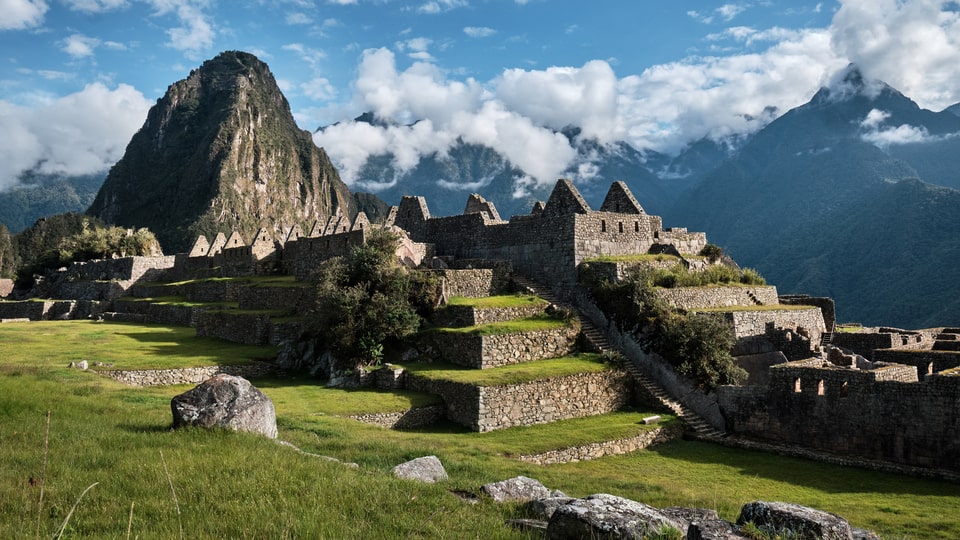
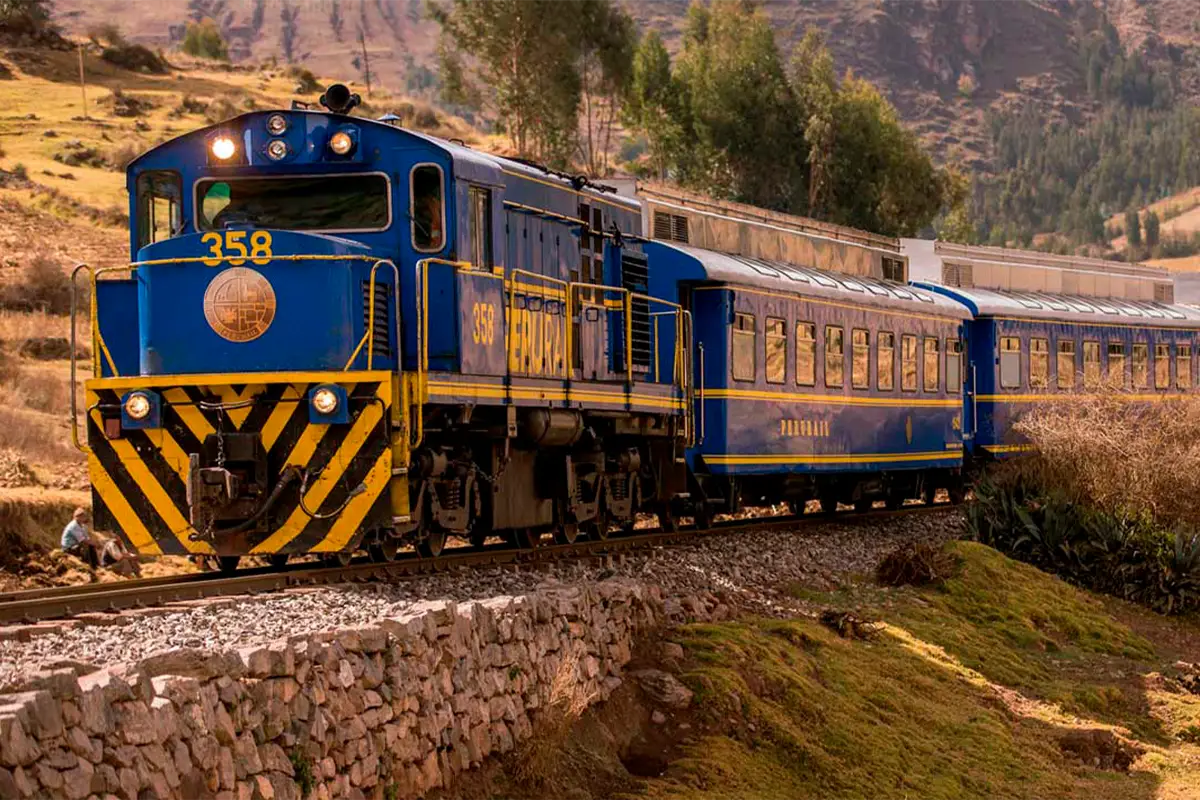

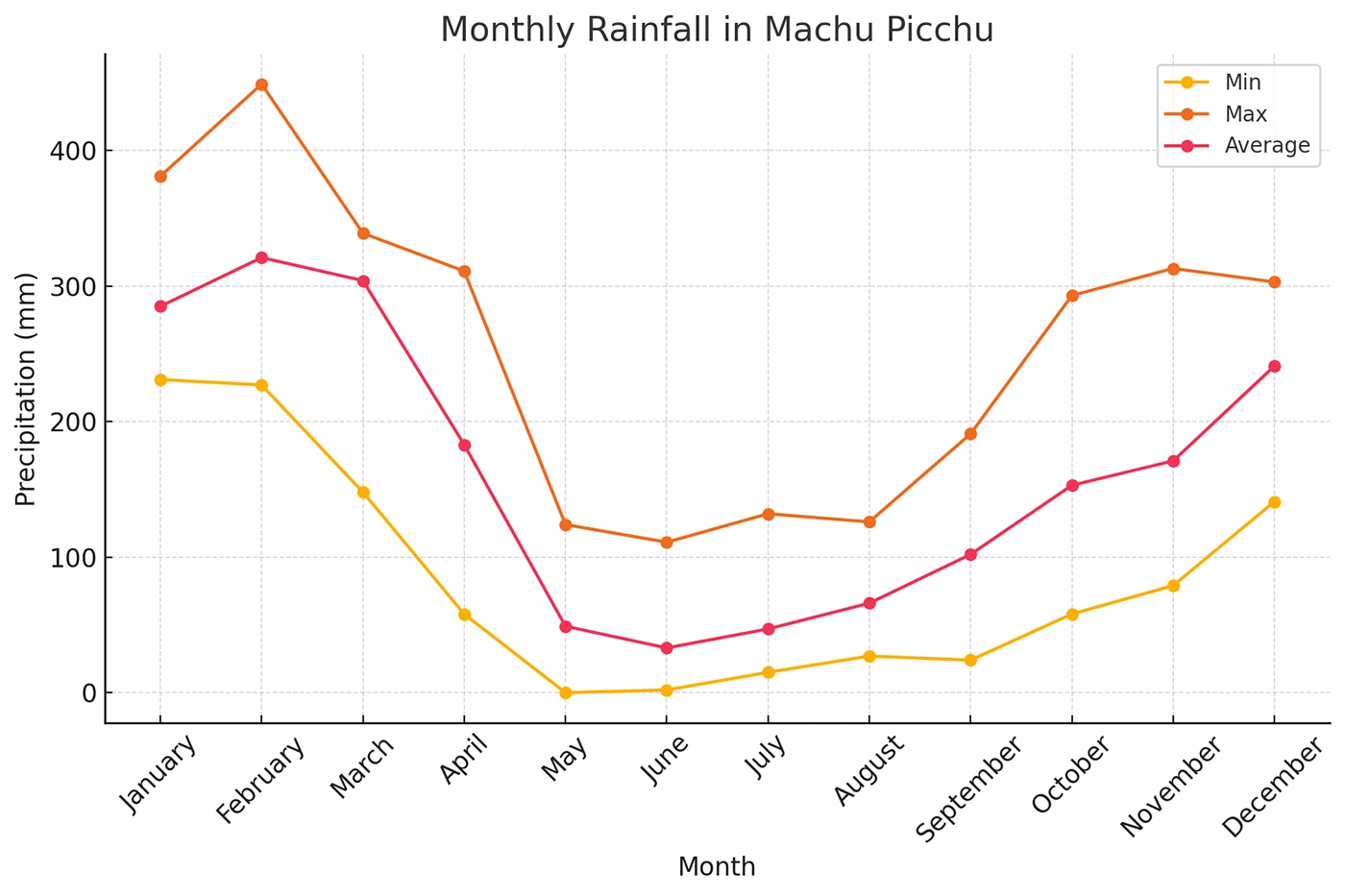
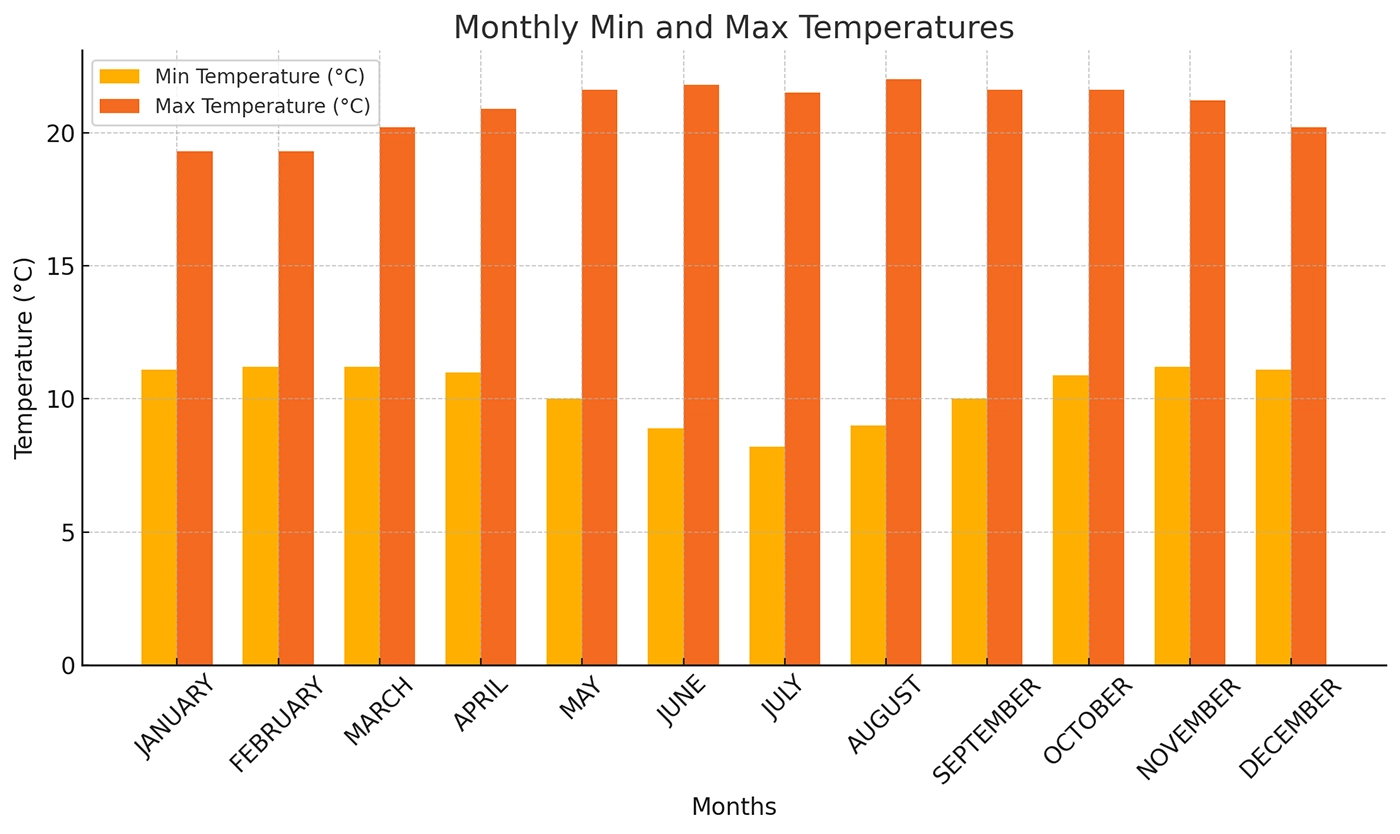
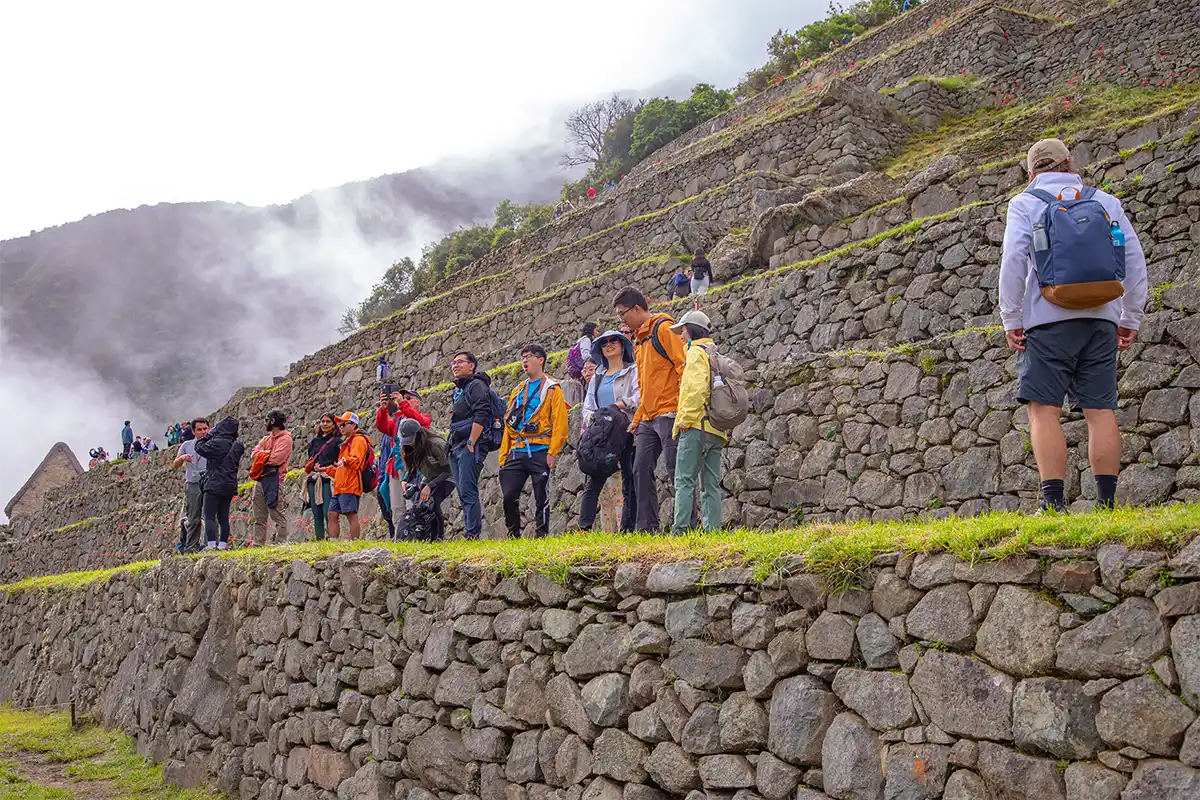
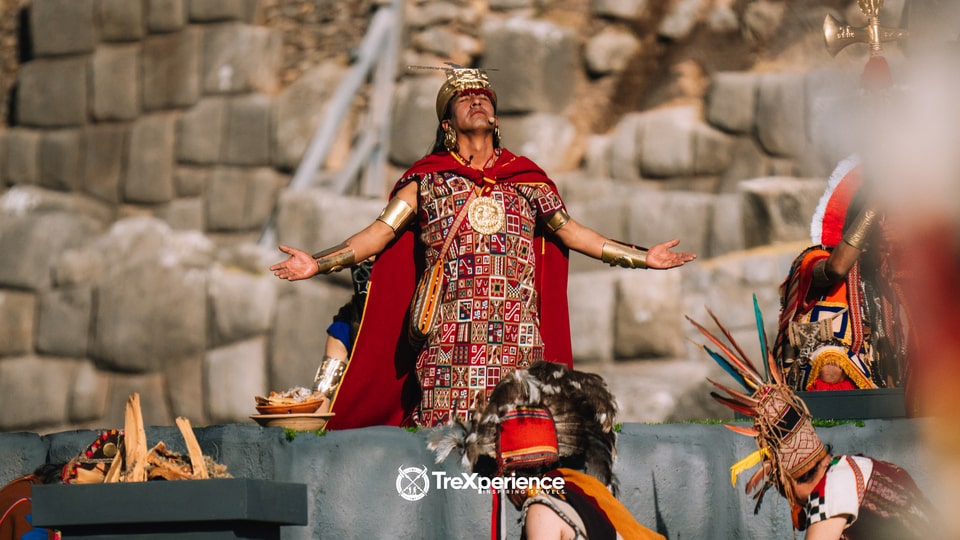
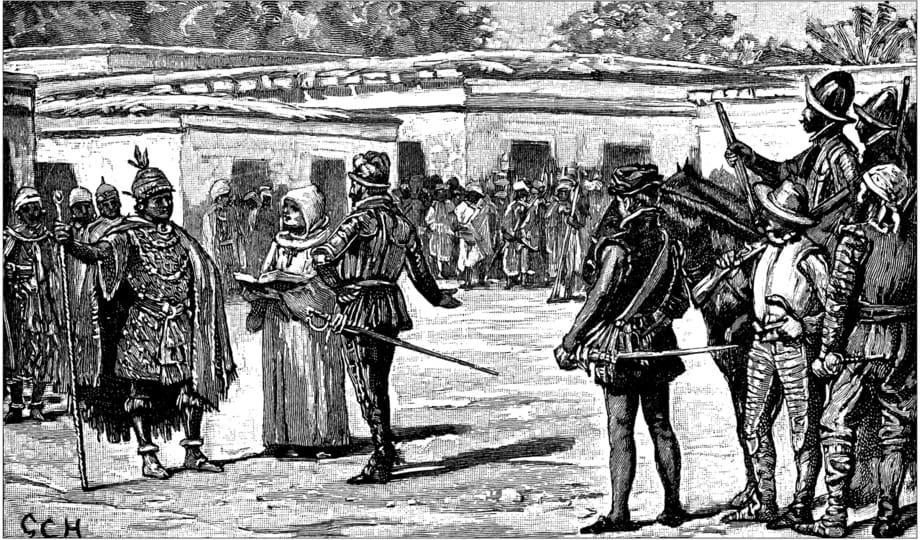
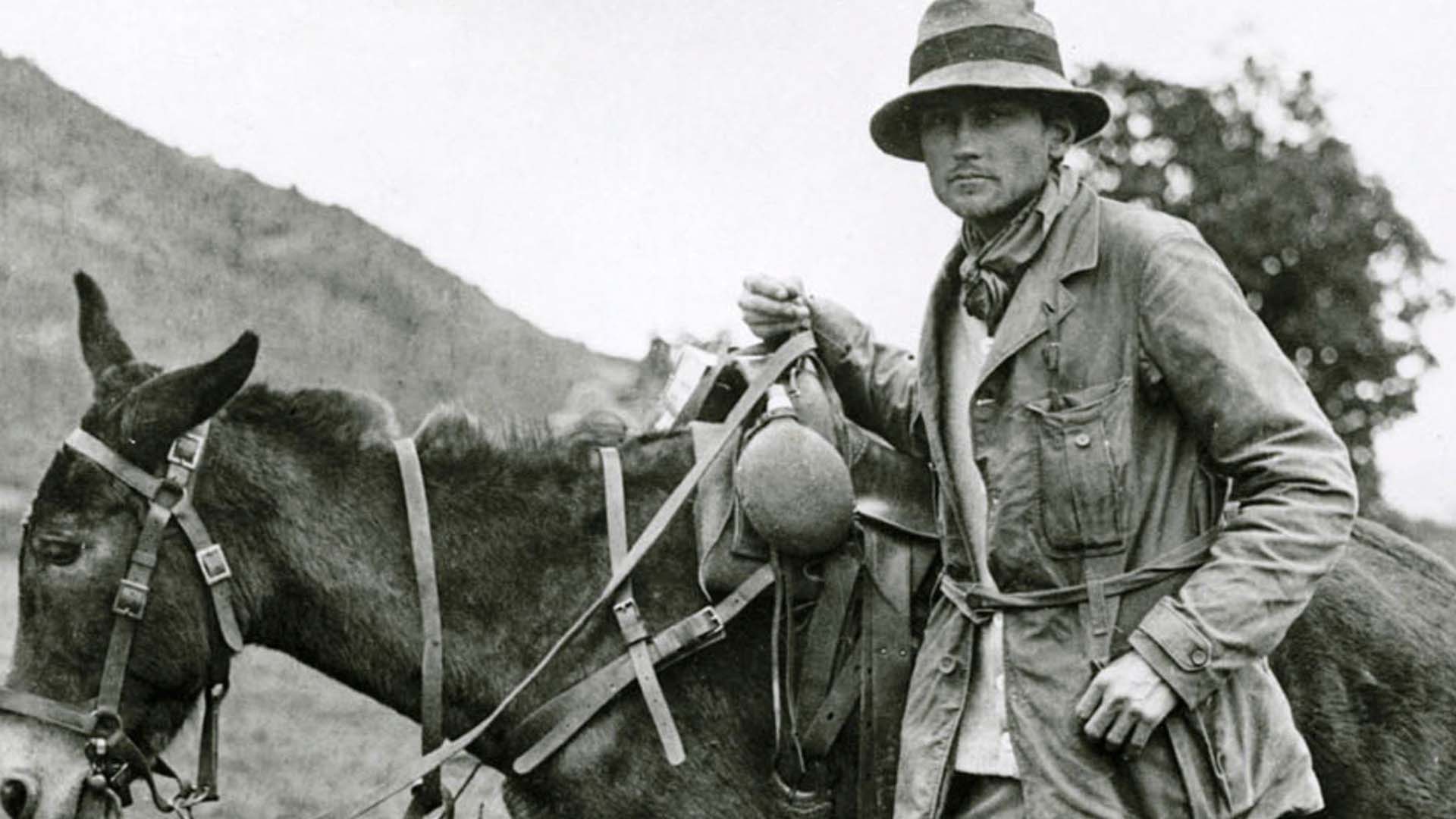
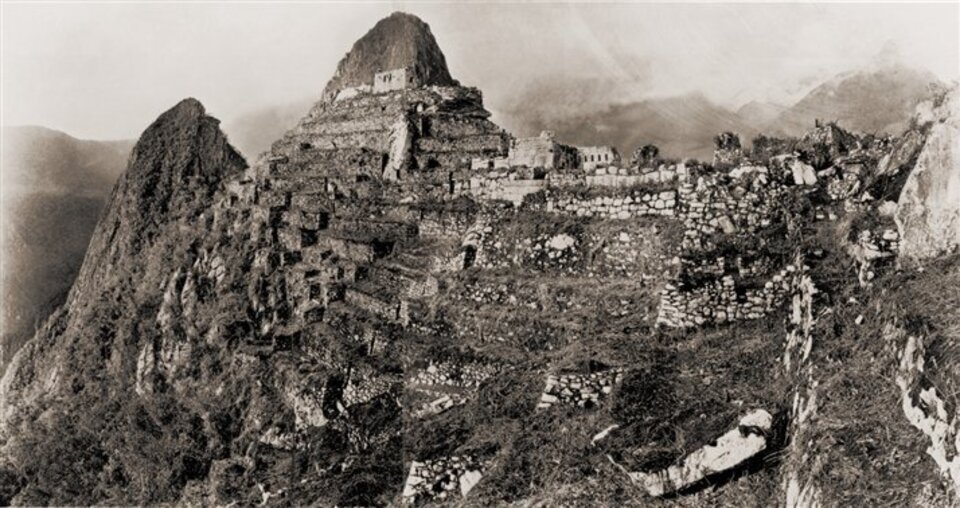
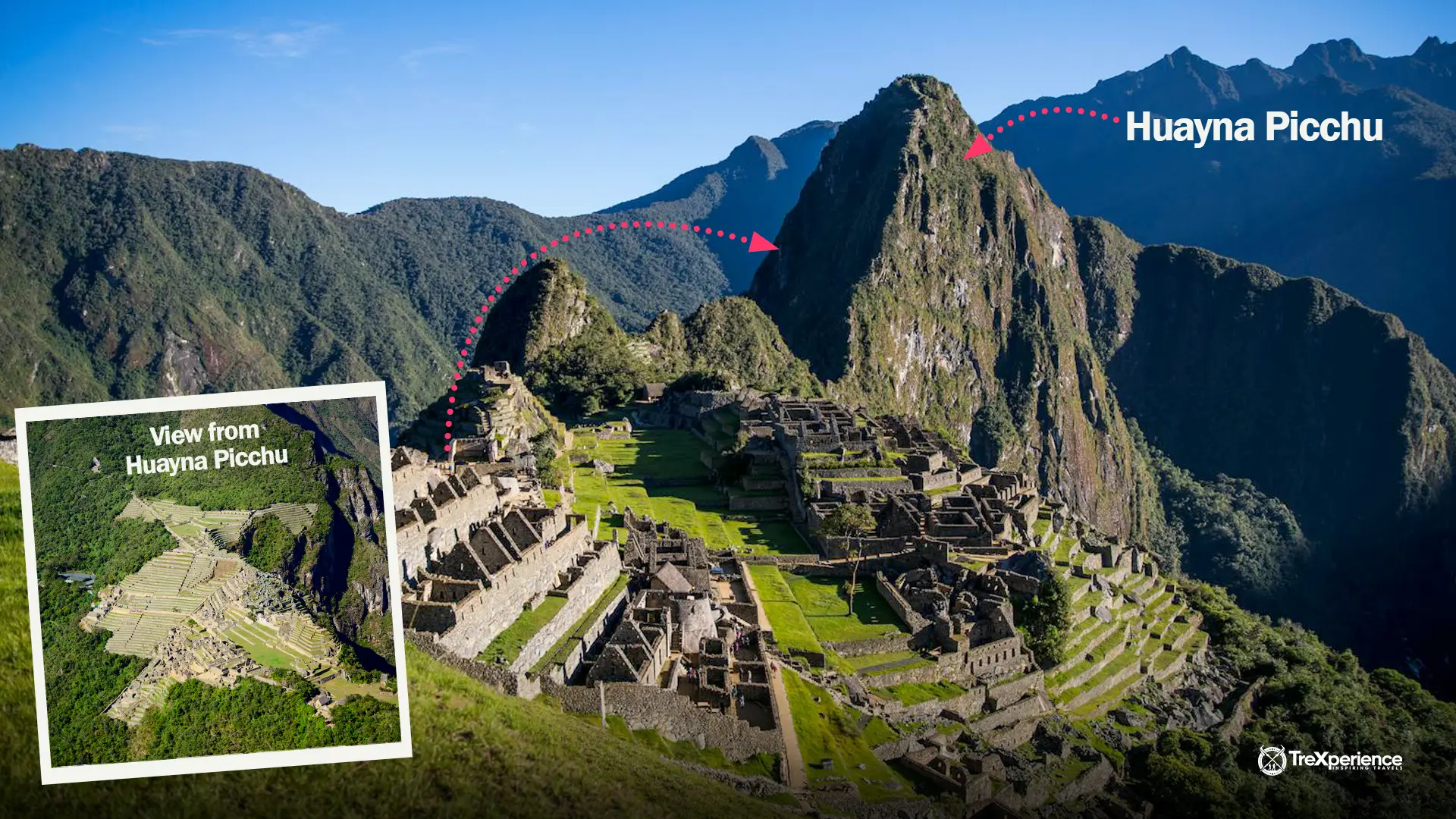
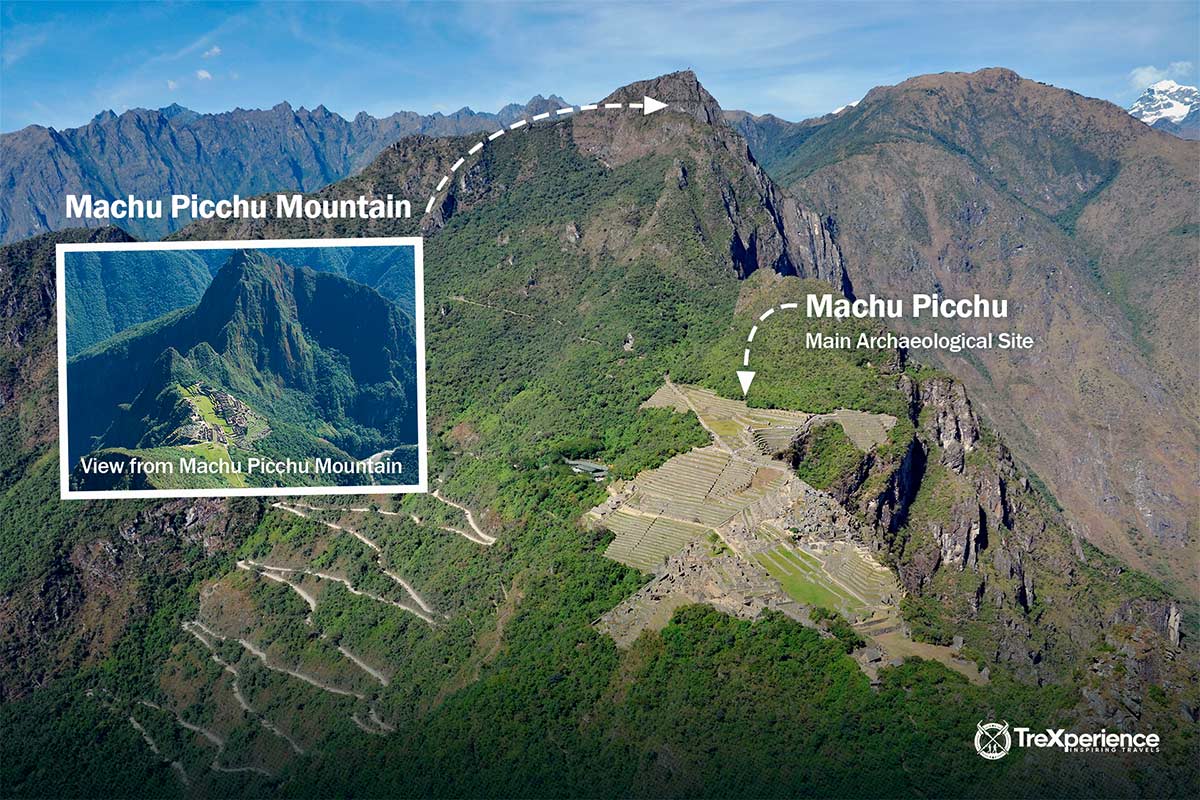
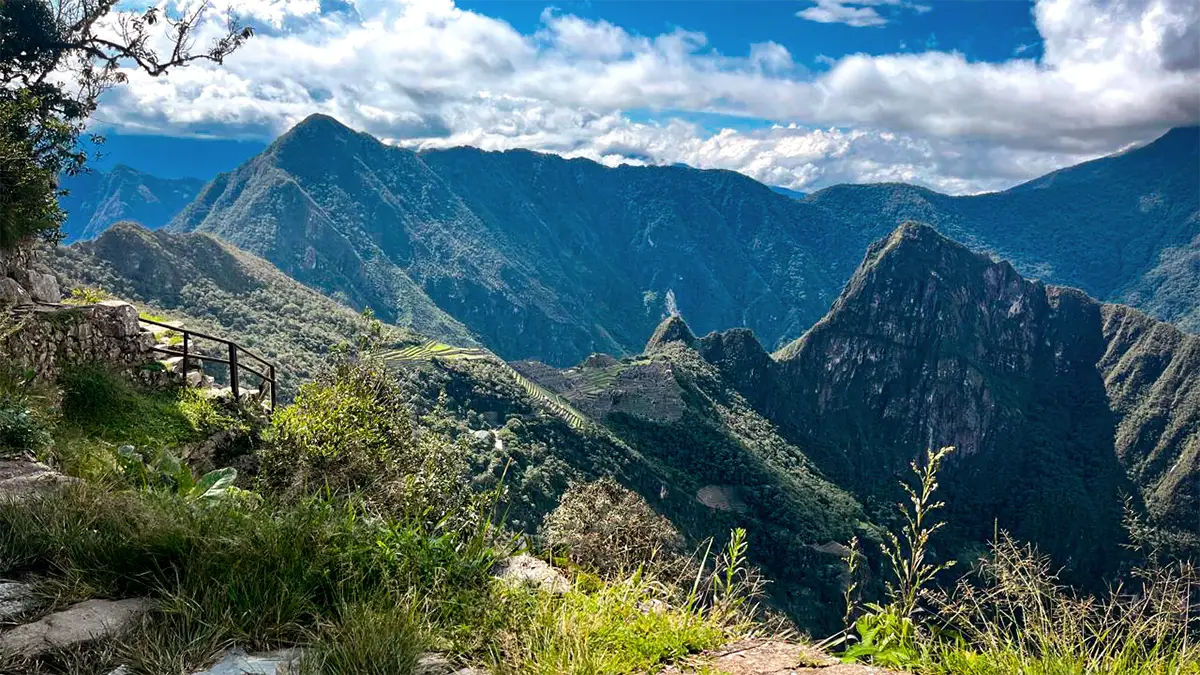
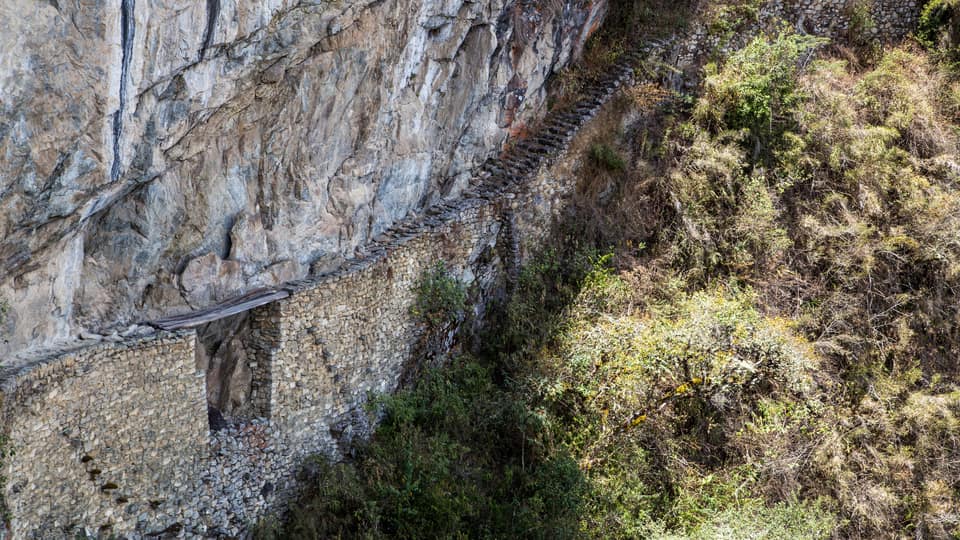
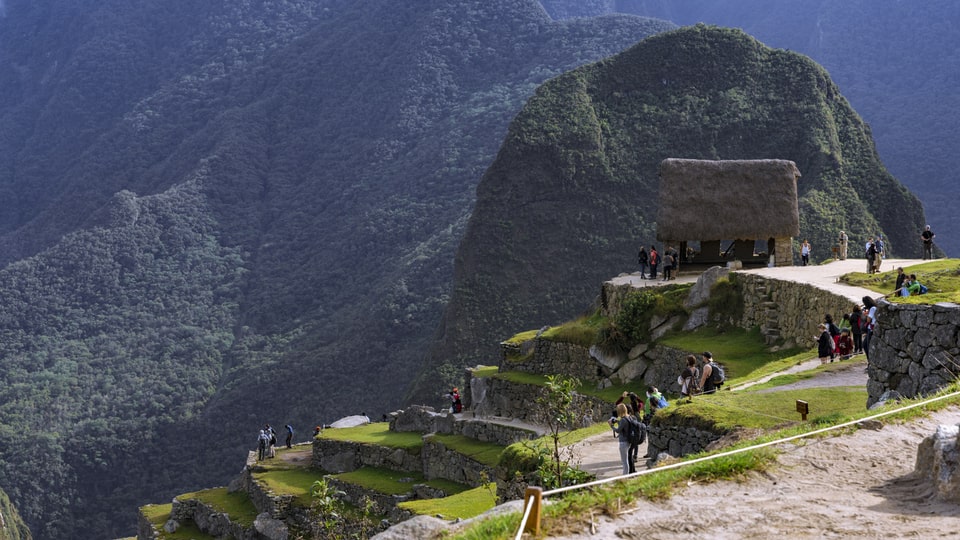
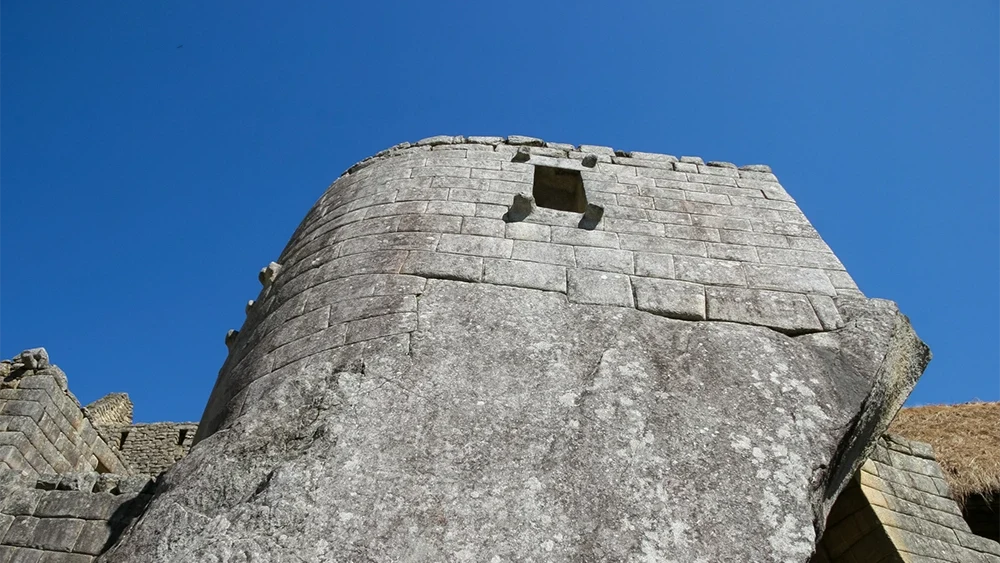
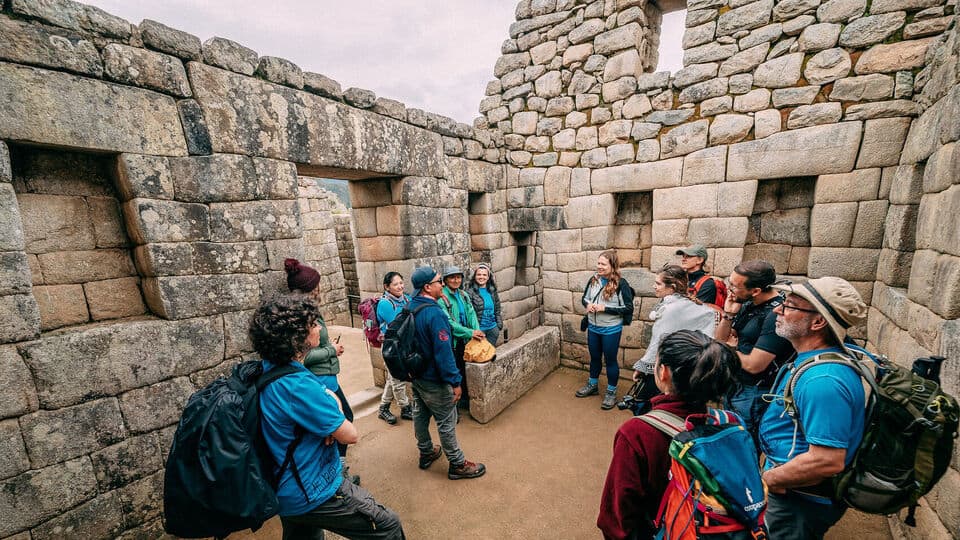
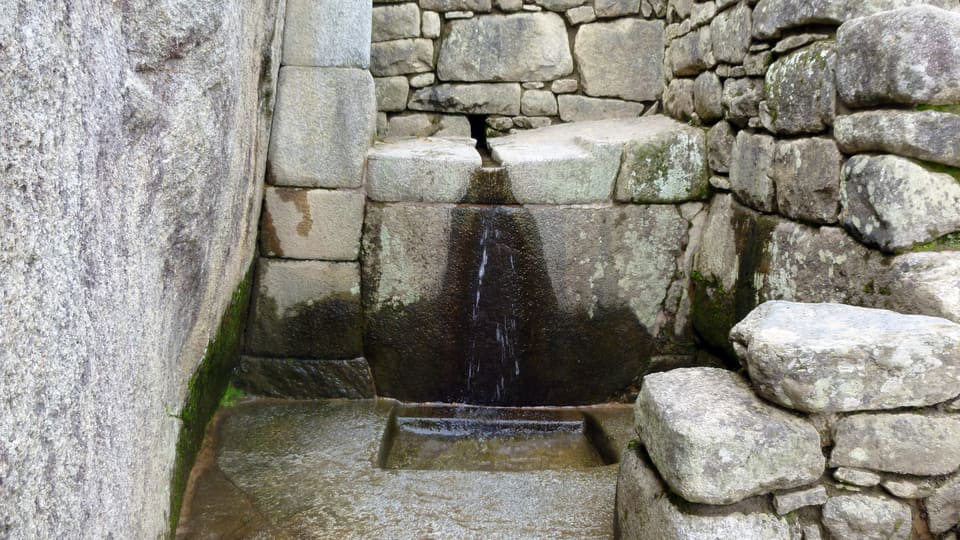
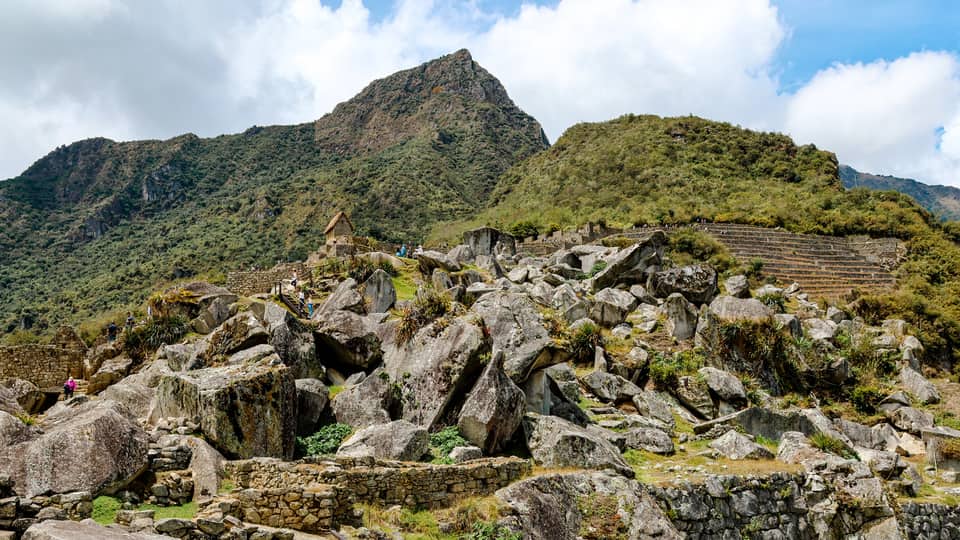
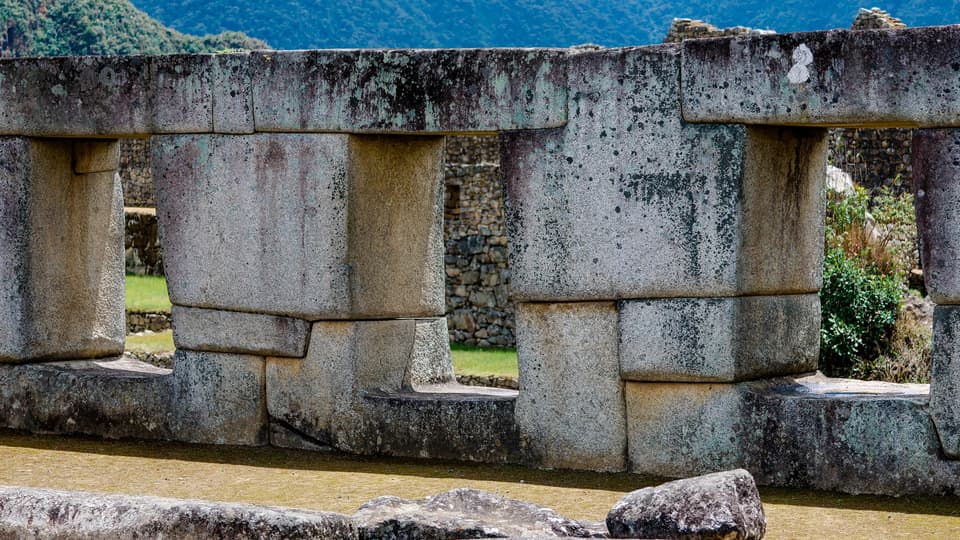
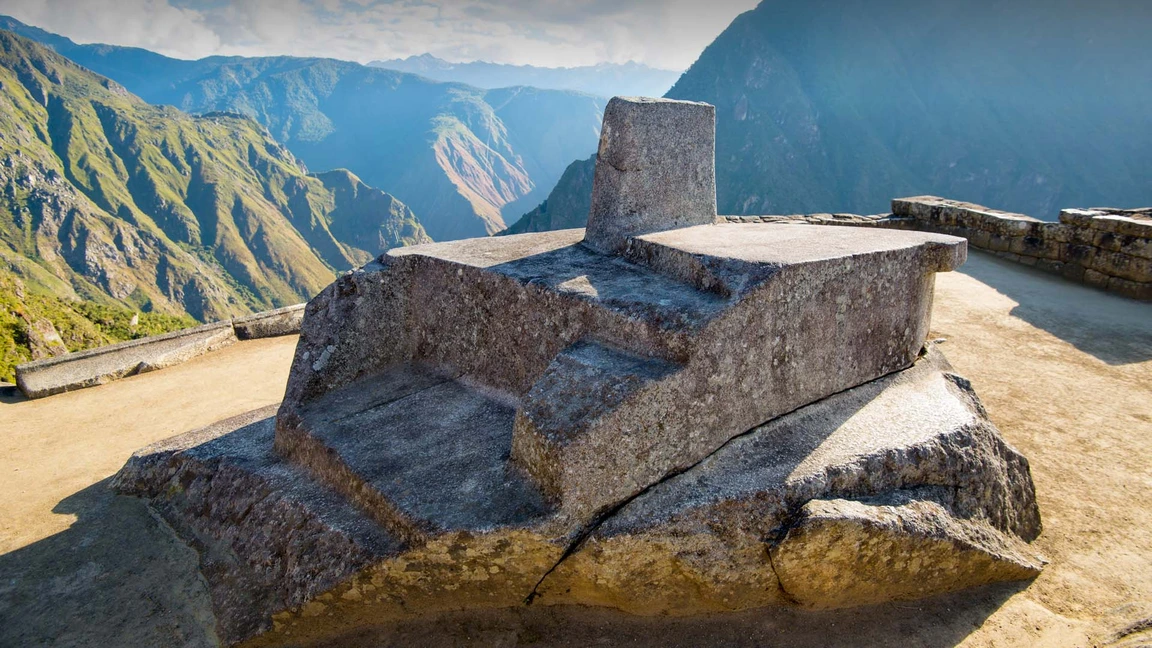
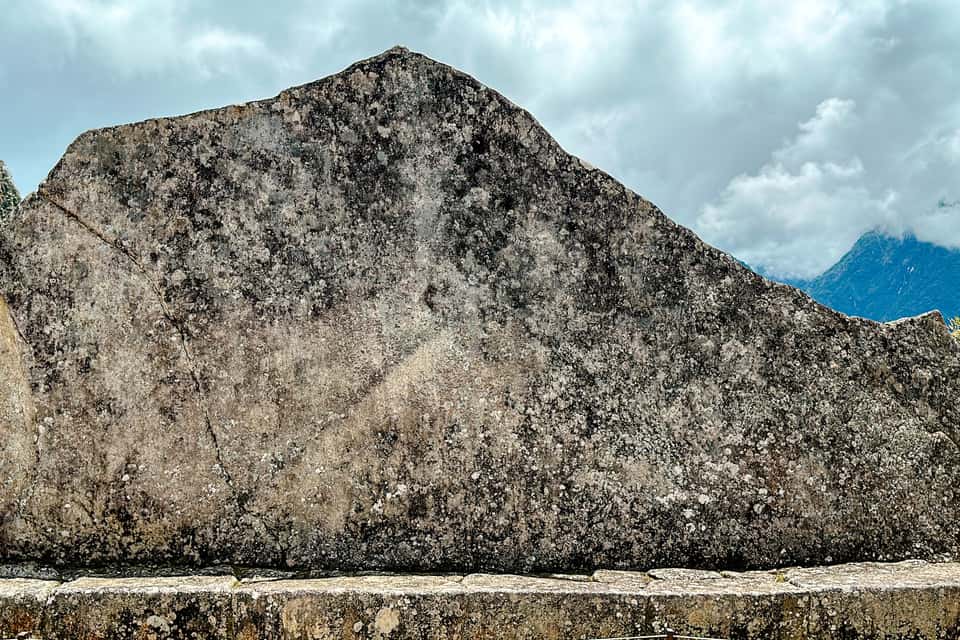
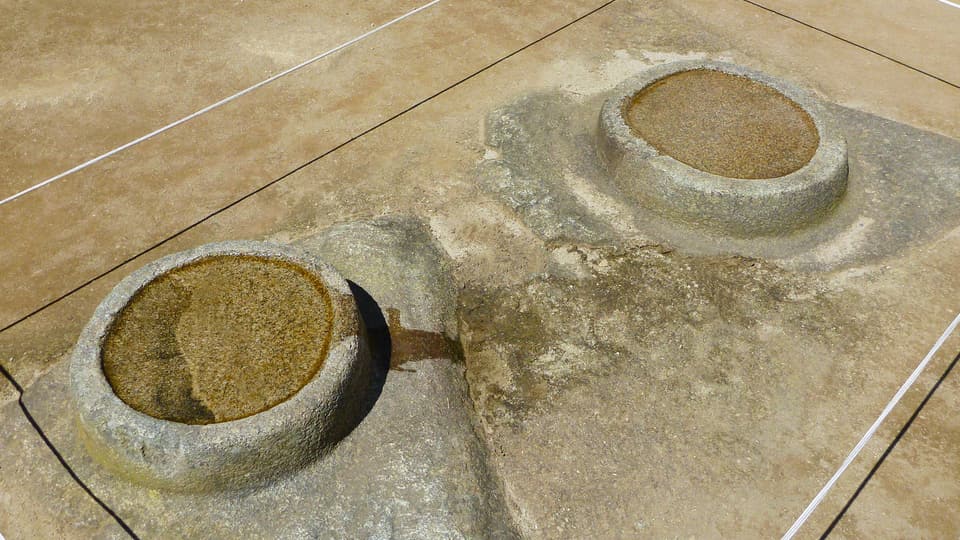
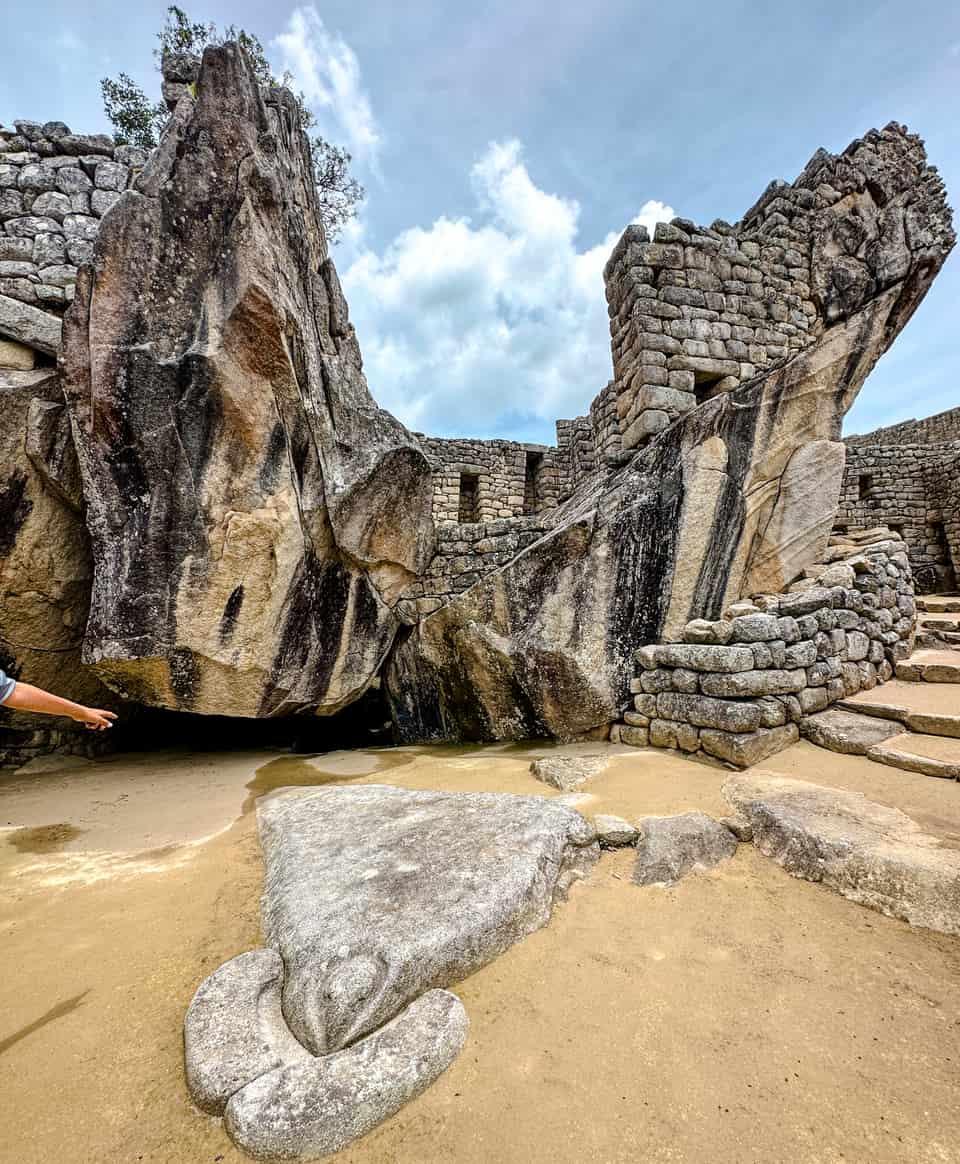
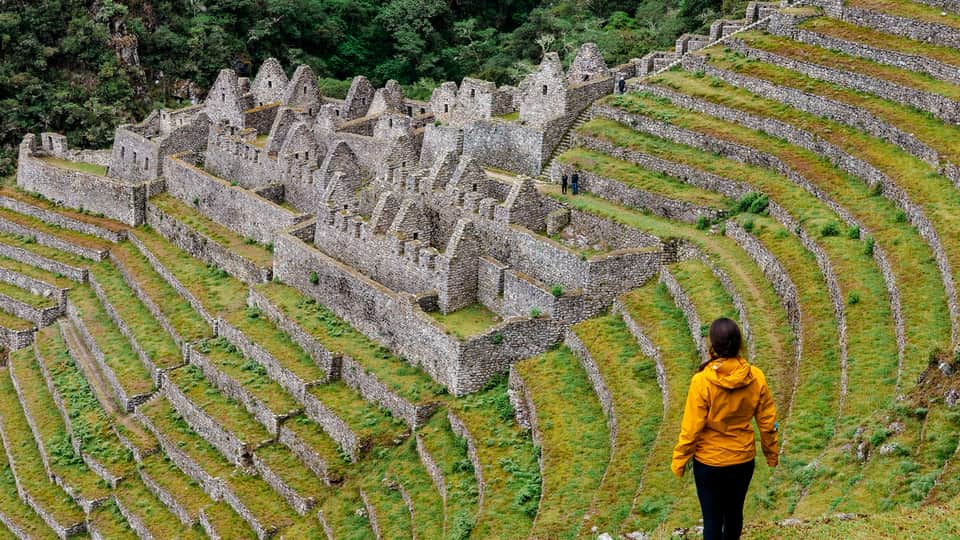
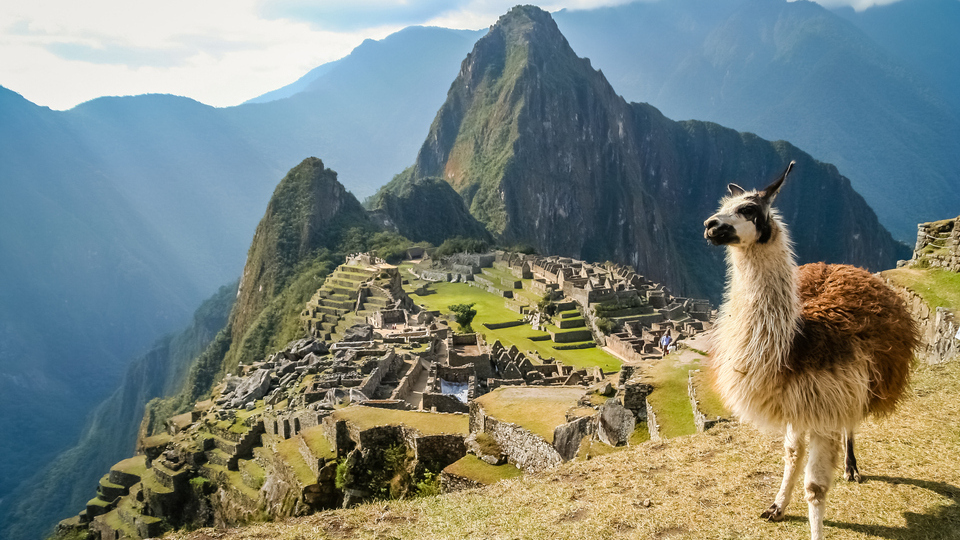
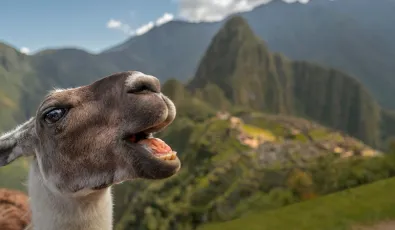
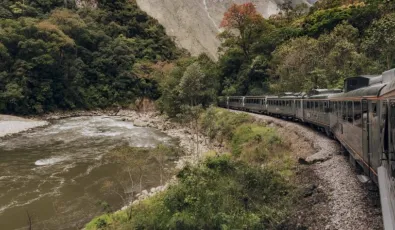
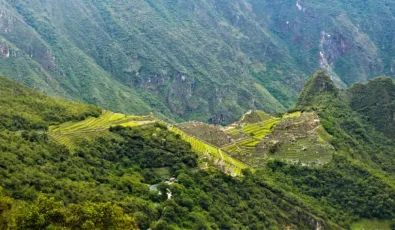
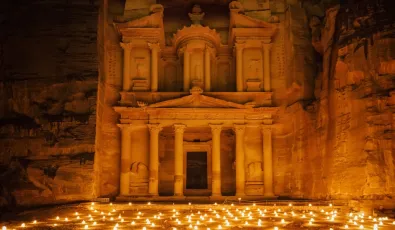
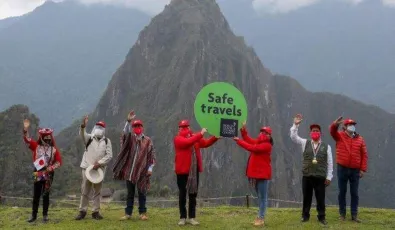

Add new comment